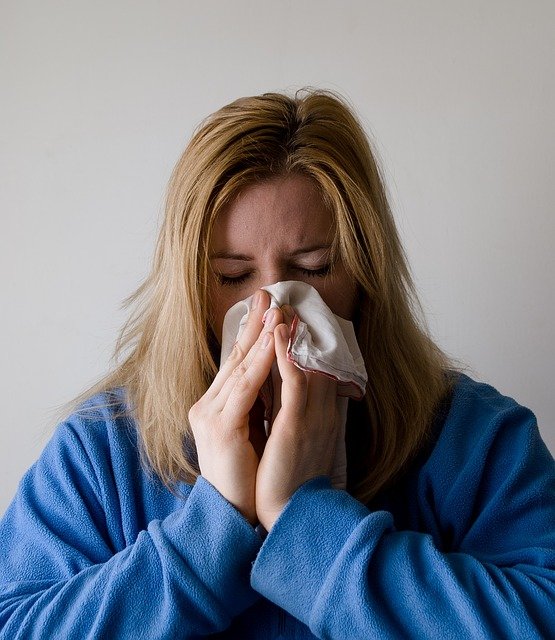
by Tanya Keam | Jan 14, 2022 | Acupuncture, Chinese medicine, Cough, covid19, Food, Immune Support, Immune system, Nambour, Nourishing, Seasonal living, Sunshine coast, Winter
Immune System treatment with Chinese Medicine
Immune system Chinese Medicine and Western medicine treatment approaches are quite different from each other.
When a virus enters the nose and throat, our immune system has receptors that tell the body there is an ‘invasion’, so the body sends helpers to ‘defend’ the body at the sight of infection, so we feel a sore throat come on for example. The immune system can often fight off an infection on its own, other times other invention may be needed.
The treatment for treating a common cold or flu from a western medicine perspective may include pharmaceutical use such as ibropofen to drop a fever, panadol for a headache, your doctor may advise rest and fluids to keep you hydrated. Elderly people are often given a flu shot in Autumn so they can build some antibodies to at least some of the inlfuenza variants in time for when Winter comes around and flu’s are more common.
The treatment for treating a common cold or flu or anything else viral from a Chinese medicine or eastern medicine perspective includes first understanding the onset. One person may come down with a sore throat and headache, another may feel lethargic, stuffy nose and feverish – even with the same variant of virus. The persons’ general health and medical history is also taken into account. For example if someone has chronic asthma but exercises regularly and eats a well balanced diet, compared to someone who is diabetic, obese and may be on multiple medications – they are completely different health status’s and their immune system response to a virus may be vastly different.
Herbal medicine is used at the first onset of symptoms for a virus which presents with flu symptoms and diagnosed usually with 3 seperate clinical presentations:
- Wind cold – runny nose, sneezing, some mucous congestion, fatigue, maybe a slight cough. There are no ‘hot’ symptoms and often happen if we just get caught in the rain or when the winds pick up in Autumn in the southern hemisphere.
- Wind heat – sore throat, swollen glands, headache, fever, achy muscles, lethargy, rapid heart rate and a yellow tongue coating. These are hot symptoms and often we catch this type of pathogen from someone else. Wind cold can sometimes turn into a wind heat pattern if the immune system has a hard time recovering. The mucous will go from clear to white to yellow to green and the fever etc kick in to further fight off the now hotter pathogen.
- Toxic heat and/or with phlegm – this type of condition is when wind heat isn’t resolved and a person gets more sick. They may end up with a lung infection with green or blood streaked sputum or have phlegm in their digestive system which leads to loose or sticky stools as well as lung phlegm that is hard to expectorate.
Depending on the persons constitution, herbal medicine is given as soon as symptoms come on. If you can get herbs into you within the first 12 hrs of a sore throat coming on (a wind heat pathogen for example), the herbs vent, disperse the expel the virus outwards preventing it from going deeper (aches, fever, then going to the chest then do not occur). As well as hydration, a healthy diet and rest. If however a pathogen lingers and nasty cough sticks arounds for weeks, a whole different approach is needed now as not only does the pathogen need to vent but the persons immune system needs some serious support!
Nutrition is a key part in anything cold/flu. Wind heat patterns already have so much heat in the body with fever, sore throats and aches going on we don’t want to add fire to fire so avoiding heating foods such as spicy, chocolate or coffee which create further heat is not recommended. But watermelon which is very cooling on the body also soothes a sore throat. Bonus! When a lot of mucous is present, it is not recommended to consume foods while sick that create more mucous in the body. These include dairy products and foods that have the texture of mashed avocado, peanut butter or bananas – they have ‘sticky’ consistency which is exactly what phlegm is. Whereas as a wind cold presentation would benefit from some spices such as chai tea which have dispersing and slightly warming qualities to balance out that cold invasion. it is a simple balance of cold balances hot, hot balances cold and avoiding those sticky ‘damp’ kind of phlegm foods when you have a chesty cough.
Traditional Chinese medicine consists of multiple facets to healing including acupuncture, cupping and gua sha therapy, massage, herbal medicine, exercise, nutrition and lifestyle recommendations to keep people well and as a way of preventative medicine. The lung energy is very much associated with the immune system so doing exercises that strengthen the lungs such as swimming, yoga, breath work and running build that lung capacity and ‘chi’ (energy). Someone who has Asthma would really benefit from swimming to strengthen the lungs and with the bonus of outside exercise you get Vitamin D too. Many minerals and vitamins found in our foods also support the immune system which is well researched, so eating a well balanced diet with lots of fruit and veggies is looking after you!
Allowing fevers to break on their own (without always reaching for the Ibuprofen) is a good sign your immune system is fighting off an infection. Further intervention is rarely needed when a fever gets high, but shouldn’t be disregarded either as a high fever can cause further illness. Getting a cold or flu every now and then is okay as well as your body creates antibodies to further protect itself for future attacks. Common herbs to strengthen the immune system in Chinese medicine are Huang Qi (Astragalus), Lingzhi (Reishi mushroom) and Bai zhu (Atractylodis Macrocephalae) which can be taken through the cold flu season to boost the immune system.
Here is a simple recipe to help a lingering cough!
If you’d like support in balancing your body and immune system Chinese medicine style then book in for a consult and treatment and we will get your system in great shape! You can book online or contact us at our Sunshine Coast Acupuncture and Chinese Medicine Clinic in Nambour on the beautiful Sunshine Coast.
 Hi, I’m Tanya, an AHPRA registered Acupuncturist, bodyworker and doctor of Chinese medicine in Nambour in the Sunshine Coast hinterland, Queensland Australia. I practice Chinese and natural medicine because its safe, logical, relevant and has effectively shown methods of natural wellness for thousands of years (read more about my training here). Life doesn’t need to be complicated and nor does the treatment approaches to get people feeling vibrant and well. I’ve seen people gain a lot from treatments, much more than just alleviating symptoms. It’s exciting to connect with people and share deep wisdom from the classics of ancient and traditional medicine, with modern protocols for todays mind-body living. See you in the clinic !
Hi, I’m Tanya, an AHPRA registered Acupuncturist, bodyworker and doctor of Chinese medicine in Nambour in the Sunshine Coast hinterland, Queensland Australia. I practice Chinese and natural medicine because its safe, logical, relevant and has effectively shown methods of natural wellness for thousands of years (read more about my training here). Life doesn’t need to be complicated and nor does the treatment approaches to get people feeling vibrant and well. I’ve seen people gain a lot from treatments, much more than just alleviating symptoms. It’s exciting to connect with people and share deep wisdom from the classics of ancient and traditional medicine, with modern protocols for todays mind-body living. See you in the clinic !
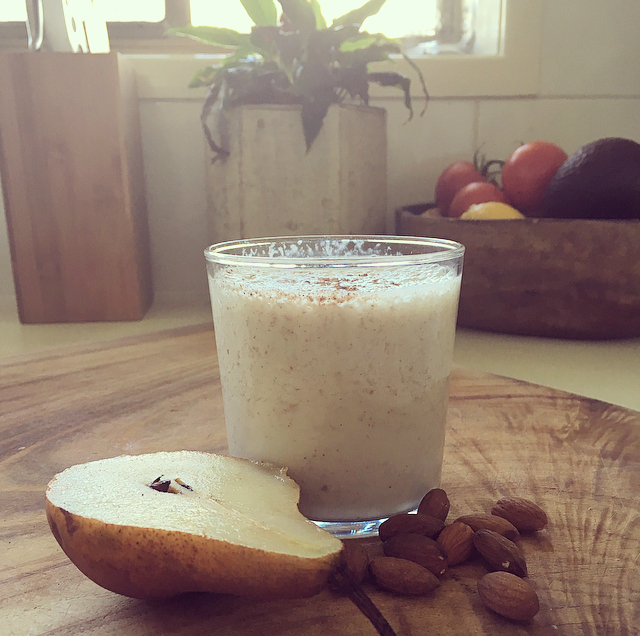
by Tanya Keam | Jun 11, 2018 | Acupuncture, Chinese medicine, Client information, Cough, Dairy alternatives, Dairy free, DIY Wellness Tips, Food, Herbal remedies, Homemade, Immune Support, Immune system, Nambour, Nutrition, Recipes, Seasonal living, Smoothie, Sunshine coast, Vegan, Vegetarian, Wellness, Winter
A simple Chinese Medicine cough recipe
Chinese medicine is seasonal medicine – what better way to take care of yourself than a cough recipe to look after you this season. In Winter it is recommended to consume less cold and raw food as it harsh on our digestive system to process, which is a balmy 36.5 degrees inside. Putting something the temperature of the fridge in a nice warm coldren stomach, first takes energy to warm it before it can digest it. This can lead to fatigue, bloating, and loose bowel movements.
In late Autumn and Winter we opt for:
- More warming foods such as soups and stews to warm us up from the inside!
- Smoothies are generally not recommended in Winter at all as they are too cold. However putting a wonderful twist on the conventional fruit smoothie so that is warming not only for our digestive system but designed to benefit the lungs and relieve coughs.
The main ingredient, pears, is highly valued in Chinese medicine as the fruit that is most beneficial for coughs. What does Autumn and Winter bring? You guessed it, coughs!
Pears are “sweet, slightly sour, and cool.” They “generate fluids” but also “dissolve phlegm,” so they are ideal for treating dry coughs, a hoarse voice, thirst and agitation in general.
Our second key ingredient is almonds which is also a great dairy alternative in smoothies. Almonds have similar properties to apricots in Chinese medicine, with apricot seeds being used as one of the key medicinals for treating coughs. Almonds are not as potent as apricot seeds (which have some mild toxicity and shouldn’t be consumed on a regular basis), but they do have some similar properties – moistening the lungs, relieving coughing and wheezing. That makes them the perfect complement to pears in this smoothie.
This recipe is specific for almond milk which helps resolve phlegm, so don’t switch it up for dairy milk as dairy is more phlegm forming.
Chinese Medicine Cough Recipe (Spiced Pear Smoothie with Almonds and Chia)
Serving size: About 1-2
Ideal for high speed blender
Ingredients
1 Pear (room temperature)
¾-1cup Almond Milk (how thick do you like it?)
10 natural Almonds (soaked overnight in water if possible, otherwise raw is fine)
¼-1/2 teaspoon Garam Masala spice
Dash Cayenne pepper or Cinnamon (to keep the digestive system warm)
1 tablespoon Chia Seed (can be soaked in almond milk prior for 15 minutes to turn into a jelly)
1-2 teaspoons Manuka honey
NO ICE !
Directions
Blend all ingredients until smooth. Enjoy!
Take care this Winter, there has already been many colds and influenza floating around.
 Hi, I’m Tanya, an Acupuncturist and Chinese medicine practitioner in Nambour on the Sunshine Coast, Queensland Australia. I practice Chinese medicine because its safe, logical, relevant and has effectively shown methods of natural wellness for thousands of years (read more about my training here). Life doesn’t need to be complicated and nor does the treatment approaches to get people feeling vibrant and well. I’ve seen people gain a lot from treatments, much more than just alleviating symptoms. It’s exciting to connect with people and share deep wisdom from the classics of ancient and traditional medicine, with modern protocols for todays mind-body living. See you in the clinic !
Hi, I’m Tanya, an Acupuncturist and Chinese medicine practitioner in Nambour on the Sunshine Coast, Queensland Australia. I practice Chinese medicine because its safe, logical, relevant and has effectively shown methods of natural wellness for thousands of years (read more about my training here). Life doesn’t need to be complicated and nor does the treatment approaches to get people feeling vibrant and well. I’ve seen people gain a lot from treatments, much more than just alleviating symptoms. It’s exciting to connect with people and share deep wisdom from the classics of ancient and traditional medicine, with modern protocols for todays mind-body living. See you in the clinic !
Contact me
Book online

by Tanya Keam | Jun 4, 2018 | Acupuncture, Chinese medicine, Client information, Daily Rituals, DIY Wellness Tips, Fertility, fertility acupuncture, Food, Hormones, Menstrual cycle, Nambour, pregnancy, Sunshine coast, Wellness, Womens health
Chinese Medicine helps balance hormones with simple nutrition changes. Let’s look at the cultural differences first.
Many Western women treat their menstrual cycle as biological pre-determined:
* Painful or not
* Long or short
* Regular or irregular
* Clear skin or break outs
Many women stay on the contraceptive pill for 15+ years “for reasons such as clearer skin and fewer headaches”, when they haven’t had a proper period since they were teenagers. Remember the contraceptive pill only mimics a period, any bleeding that occurs is due to withdrawal of the pill. Thus, menstrual cycles and having a baby are treated like it’s all an act of fate, that their cycles will automatically regulate post pill – when the contraceptive pill actually turns off ovulation.
While in Eastern cultures, women believe that it is imperative that they take certain care to look after their cycles throughout their entire life.
What does this mean?
Firstly, there are genetic pre-dispositions that we all face with our health, but that doesn’t mean we have to go down the same path as our ancestors. I once heard a quote “Our genes load the gun, but our environment is what pulls this trigger”. In other words our daily life habits and individual environments are important to change these patterns to prevent illness and maintain wellness.
In the east, women live by a rule that it is very important to not eat cold foods during one’s period and to rest for a month after giving birth. Why so?
Chinese medicine helps balances hormones by looking at 4 concepts – hot, cold, excess and deficient. As an example, ‘excess’ means too much, while ‘deficient’ means too little. These concepts describe basic pathological states that are to be addressed in treating gynaecological health. An excess pattern can be seen as Endometrial fibroids inside the pelvic cavity (otherwise known as a blockage), while a deficient pattern can be seen as a very light or no period present at all. In relation to temperatures, the hot and cold nature of food is distinctive from the physical temperature of food, yet both states mutually reinforce each other.
Consuming cold foods during your cycle
Chinese medicine helps balance hormones by recommending to not consume cold foods just before or during the menstrual cycle. The reason is that ‘cold’ has the property of contracting and constricting, while ‘warmth’ is more moving and flowing. The key to healthy, manageable and pain free cycles is to maintain the proper flow of discharge of menstrual blood on a regular monthly basis. This includes the quality of the menstrual blood – not too dark and clotted or too little and light coloured.
Many women visit the clinic and say “My period is always quite painful and I feel like I can’t quite function for a couple of days but it’s just my normal”. Just because this is the way you have always felt in your cycle, does not mean it is okay or healthy. There are better ways so let’s keep reading …
Cold foods and bodily exposure to cold temperatures just before or during menstruation can cause painful cramps and in certain situations lead to ongoing gynaecological issues. Swimming on your period is a big NO NO in Chinese medicine – you guess it.. Cold! While you are menstruating, the cervix is more open, leading the cooler temperature of the water to lodge inside your pelvic cavity. The advancement of tampons made life a little easier for women, but if you can miss a swim on day 1-3 of your cycle, your health will thank you for it.
I have found that in my clinical practice that almost all of my patients with digestive complaints in one form or another have come to understand this basic understanding of temperatures and how Chinese medicine helps balance hormones this way. For these patients, physically cold foods such as salads or too many smoothies with ice and raw fruit, will exacerbate their digestive complaints and therefore upset the natural rhythms of their cycles. Even symptoms such as bloating can be resolved by reducing cold foods and drinking room temperature water.
Some women can object and say they can eat a very cold diet of raw vegetables, drink ice water and swim to their hearts content and have pain free, non-clotted, easy flowing periods! Yes, some women don’t seem to be as vulnerable as others, but that doesn’t validate the principles in general. These women may experience ‘contracting and constriction’ in other areas of their health, such as tension headaches, acne, breast tenderness, mood swings and pain elsewhere in the body.
To learn more about the specific nature of how food is determined cold, neutral or hot, or to learn more about how Chinese medicine help balances hormones with acupuncture and herbal medicine, then get in touch.You can contact me or you can now book online.
 Hi, I’m Tanya, an Acupuncturist and Chinese medicine practitioner in Nambour on the Sunshine Coast, Queensland Australia. I practice Chinese medicine because its safe, logical, relevant and has effectively shown methods of natural wellness for thousands of years (read more about my training here). Life doesn’t need to be complicated and nor does the treatment approaches to get people feeling vibrant and well. I’ve seen people gain a lot from treatments, much more than just alleviating symptoms. It’s exciting to connect with people and share deep wisdom from the classics of ancient and traditional medicine, with modern protocols for todays mind-body living. See you in the clinic !
Hi, I’m Tanya, an Acupuncturist and Chinese medicine practitioner in Nambour on the Sunshine Coast, Queensland Australia. I practice Chinese medicine because its safe, logical, relevant and has effectively shown methods of natural wellness for thousands of years (read more about my training here). Life doesn’t need to be complicated and nor does the treatment approaches to get people feeling vibrant and well. I’ve seen people gain a lot from treatments, much more than just alleviating symptoms. It’s exciting to connect with people and share deep wisdom from the classics of ancient and traditional medicine, with modern protocols for todays mind-body living. See you in the clinic !
Research:
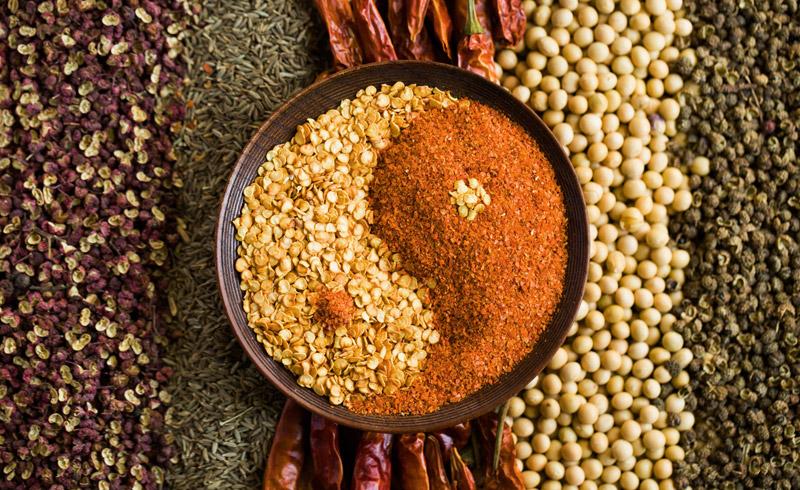
by Tanya Keam | Mar 22, 2017 | Acupuncture, Chinese medicine, Client information, Daily Rituals, Deficiency, DIY Wellness Tips, Emotions, Fertility, fertility acupuncture, Food, Herbal remedies, Hormones, Menstrual cycle, Mental health, Nambour, Nourishing, Nutrition, pregnancy, Stress, Sunshine coast, Wellness, Womens health, Yin
Have you heard of Yin and Yang?
In Chinese philosophy, yin and yang describe how seemingly opposite or contrary forces may actually be complementary, interconnected, and interdependent in the natural world, and how they may give rise to each other as they interrelate to one another. Many tangible dualities (such as light and dark, fire and water, expanding and contracting) are thought of as physical manifestations of the duality symbolized by yin and yang.
Yin qualities include:
Darkness, moon, feminine, shade, quiet, inward
Yang qualities include:
Light, sun, masculine, brightness, loud, outward
Example include:
Night (yin) and day (yang)
Yoga exercise (yin) and boxing exercise (yang)
Yin represents the energy that is responsible for moistening and cooling bodily functions. When this energy is depleted your body begins to show signs of “heating up”. This is not a true heat such as a fever, but rather a lack of the moistening and cooling functions that are necessary to maintain a healthy balance.
Women are more yin, while men are more yang – for example yin is all of the fluids in the body for women (breast milk, menstruation, vaginal discharge/lubricant) – men don’t have this. Men do have some yin qualities, as well as women having some yang qualities.
This post is focused on yin foods, thus nourishing the body and rebalancing conditions. These can include dry skin, menopausal hot flushes, tendon and ligament tightness or flaccidity, vaginal dryness, lack of breast milk production, low libido, insomnia, feeling low, scanty menstruation, hot hands and feet, constipation, dull headaches or anxiety.
Why is your yin imbalanced? Well, lots of reasons – genetics, age, stress on the body, trauma, blood loss, excess sexual activity, recreational drug use, too many yang hot foods, poor diet and lifestyle to name a few.
Nutrition is a simple way to balance yin and yang. Yin foods are cool and expanding; Yang foods are warm and contracting. Think of a shell of iceberg lettuce (Yin), and now a chunk of beef steak (Yang), and you will instantly recognise this meaning.
Foods to nourish Yin include:
- Grains: barley, millet
- Vegetables: alfalfa sprout, artichoke, asparagus, kelp, mung bean sprout, pea, potato,seaweed,string bean, sweet potato, tomato, water chestnut, yam, zucchini
- Fruit: apple, apricot, avocado, banana, lemon, lime, mango, mulberry, pear, persimmon, pineapple, pomegranate, watermelon
- Beans: adzuki, black beans, black soya, kidney, lima, mung
- Bean Products: tofu
- Nuts and seeds: coconut milk, sesame seed, black sesame seed, walnut
- Fish: fish in general but especially clam, fresh water clam, crab, cuttlefish, oyster, octopus, sardine
- Meat: beef, duck, goose, pork, pork kidney, rabbit
- Dairy: cheese, chicken egg, cow’s milk, duck egg
- Herbs and spices: marjoram, nettle
- Oils and condiments: honey, malt,
Common supplements: Ginseng, royal jelly
Examples of every day foods that can be used to build yin, include:
- Fruit smoothies with honey and banana or a fruit salad
- Fish dishes with coconut milk
- Omelettes with cheese
- Asparagus and egg salads with sesame seeds
- Tacos made with Kidney beans and topped with a small amount of cheese
- Baked Potato stuffed with tofu with soya sauce and sesame seeds.
- Pork and apple dishes
- Miso soup with tofu and seaweed
Foods to avoid:
- Stimulating foods such as the following will only further deplete yin: caffeine, alcohol, sugar and strongly heating, pungent spices.
Note: Like yin tonifying herbs, yin building foods have a tendency to congest the digestive organs and promote stagnation if large amounts are consumed. It is therefore important to consume small quantities frequently rather than large helpings irregularly. Such as a large portion if a fish coconut curry late at night is not ideal as it will sit in your stomach, stagnate and not digest properly before bed. Thus a small portion between 5-6pm is more ideal as there is more time before you go to bed to digest it.
Also, It’s not to say that yang foods you already consume such as roast chicken, other types of fish, coffee, tea, black pepper etc are to be completely avoided. Remember yin and yang balance each other out, are contrary forces that are actually complementary, interconnected, and interdependent of each other.
Other yin tips: meditate; eat more fresh fruit and salads; drink more water, teas and juices; wear pastel colors; wear loose, flowing clothes; stretch; get out into nature; listen to relaxing music; light candles at night.
Take care of you, see you in the clinic,
TK xx
Tanya Keam Wellness is an experienced health clinic in Nambour on the Sunshine Coast. Helping you to feel better in all aspects of your health and wellbeing.
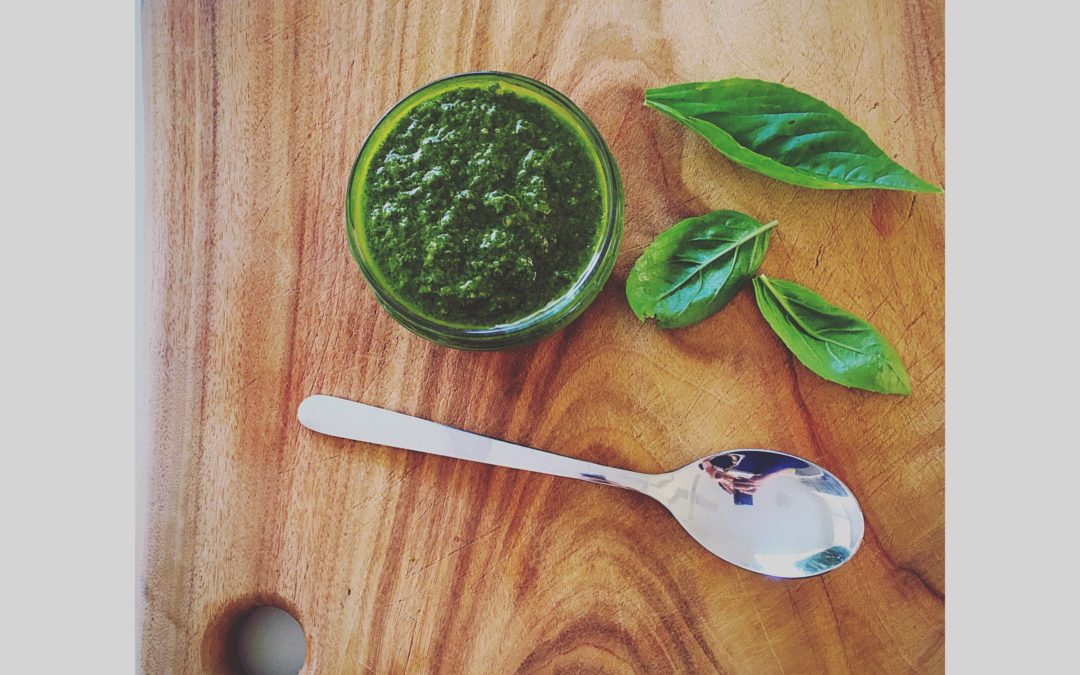
by Tanya Keam | Aug 4, 2016 | Chinese medicine, Client information, Dairy alternatives, Dairy free, DIY Wellness Tips, Food, Homemade, Nourishing, Nutrition, Recipes, Vegan, Vegetarian
2 cups (tightly packed) fresh basil, rinsed thoroughly and dried
1/3 cup raw pine nuts or walnuts
1/2 cup extra virgin olive oil
3 garlic gloves, chopped
Pinch of black pepper and sea salt / himalayan salt
2 tablespoons of nutritional yeast (BRAGG) – Made from inactive yeast that has a cheesy flavour, used to replace parmesan cheese in traditional pesto. You can find it in most health food stores.
Blend all ingredients together in a food processor, first start with half the oil, blend, stir with a spoon, add remaining oil and blend on high again.
Store in the fridge for up to 3 weeks in an air tight glass jar. Add a little oil on the top of jar to keep the pesto moist.
Basil is high in Vitamin K, vitamin C, vitamin A, iron, magnesium, folate and manganese.
Enjoy with your favourite roast vegetables, buckwheat pasta or raw zucchini curly noodles!
Eat well, take care of you, see you in the clinic,
TK xx
Tanya Keam Wellness is an experienced health clinic on the Sunshine Coast. Helping you to feel better in all aspects of your health and wellbeing.

by Tanya Keam | Feb 12, 2015 | Acidic, Alkaline, Chinese medicine, Client information, Cultures, Daily Rituals, DIY Wellness Tips, Fermented, Food, Gut flora, Immune Support, Kombucha, Nourishing, Nutrition, Parasites, Probiotic drink, Sunshine coast
What is gut flora?
Gut flora (microbiota) is the name given today to the microbe population living in our intestines. It contains tens of trillions of micro-organisms, including at least 1000 different species of known bacteria with more than 3 million genes (150 times more than human genes). Microbiota can, in total, weigh up to 2 kg. One third of our gut microbiota is common to most people, while two thirds are specific to each one of us. In other words, the microbiota in your intestine is like an individual identity card.

Why is it important?
While each of us has a unique microbiota, it always fulfils the same physiological functions and they have a direct impact on our health:
•It helps the body to digest certain foods that the stomach and small intestine have not been able to digest.
•It helps with the production of some vitamins (B and K).
•It helps us combat aggressions from other microorganisms, maintaining the wholeness of the intestinal mucosa.
•It plays an important role in the immune system, performing a barrier effect.
•A healthy and balanced gut microbiota is key to ensuring proper digestive functioning.
What does pH in the body mean?
pH stands for power of hydrogen, which is a measurement of the hydrogen ion concentration in the body. The total pH scale ranges from 1 to 14, with 7 considered to be neutral. A pH less than 7 is said to be acidic and solutions with a pH greater than 7 are basic or alkaline.
How does this affect our health?
When we eat acid-forming foods, our body works to bring our blood pH back into balance by releasing alkaline-rich minerals into our bloodstream (e.g. calcium, phosphorus and magnesium).
If we are not eating enough alkaline-forming foods, then our body has to pull these minerals from our bones, teeth and organs. This can compromise our immune system, cause fatigue and make us vulnerable to viruses and disease.
How do we keep the pH balanced to prevent illness and disease?
Maintaining an approximate 80% alkalinity and 20% acidity diet is the best way to maintain wellness.
Acidic foods (alcohol, refined sugars, coffee, fast foods, chocolate, red meat, fish, dairy) are foods that are associated with disease. A highly acidic diet creates a favourable environment for yeast, fungus, abnormal cells and even parasites to multiply and grow.
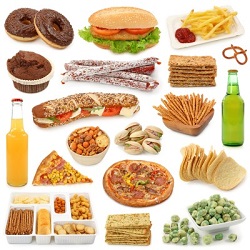
Alkaline foods (most fruit and vegetables such as leafy greens, lemons, citrus fruits, berries, broccoli, cabbage, nuts, herbal tea) are foods which maintain and prevent disease from occurring in the body.
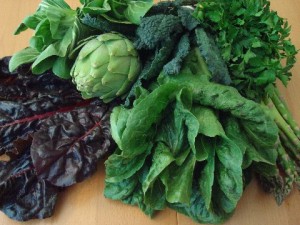
What are intestinal parasites?
Even the word “parasite” sounds terrible. Like a villain, living off the goodness within you! Eeek!
Parasites infect the gastro-intestinal tract of humans and other animals. They can live throughout the body, but most prefer the intestinal wall. Means of exposure include: ingestion of undercooked meat, drinking infected water, and skin absorption.

What’s the plan to get them out of you ASAP!?
Antibiotics are advised for intestinal parasites from your GP. However there are other options and/or in combination:
Firstly, the 4 R’s:
1. Remove the micro-organisms that shouldn’t be there, as well as toxic foods (acidic) you shouldn’t be eating
2. Replace/restore the nutrients, bacteria, intestinal flora (pre and probiotics)
3. Repair the cell on every level
4. Relaxation! – Stress, anxiety etc
Remove – Many qualified health practitioners can sort a digestive cleanse for you, using anti-microbials which first rid the body of the unwanted organisms. This can be a long haul as the organism will continue to reproduce.
Including colonics – a colon enema cleanse which literally involves flushing the colon with water and herbs.
Removing foods that have inflammatory properties will aid the whole process – wheat, gluten, soy, dairy, sugar, alcohol, fructose.
Replace/restore – In addition to the above digestive cleanse, probiotics are taken at the same time to restore the yummy gut flora. Probiotics can be taken in tablet form, yoghurt, kombucha (a fermented herbal tea – see my how to make kombucha post) or fermented vegetables. I would recommend all of the above, except for dairy during the cleanse.
Maintaining a diet that is 80% alkaline will create an unhappy environment for the parasites as they enjoy the acidity.
Repair – Additional supplements and herbs can be prescribed for you which will improve your overall health, aside from probiotics etc. Such as immune support which is a common imbalance to get parasites, worms etc in the first place. Seeking treatment from a qualified practitioner such as Chinese medicine would be ideal.
Relax – A key rule in life, not just for intestinal upsets. Regular exercise, sleeping well, good emotional-mental health, breathing deeply etc.

Note:
Intestinal parasites can be missed in stool samples, so ask your doctor for 2 or 3 samples to do a week a part just in case.
Following up with stool tests 3 and 6 months after being diagnosed is ideal. They will most certainly want to survive in you!
You may think “oh gosh it will be such a long process to rid these parasites” … but your whole digestive system will have improved and I will guarantee you will learn more about your health, diet and lifestyle in the process !!
Take care of you, see you in the clinic,
TK xx
Learn more > http://www.tanyakeamwellness.com
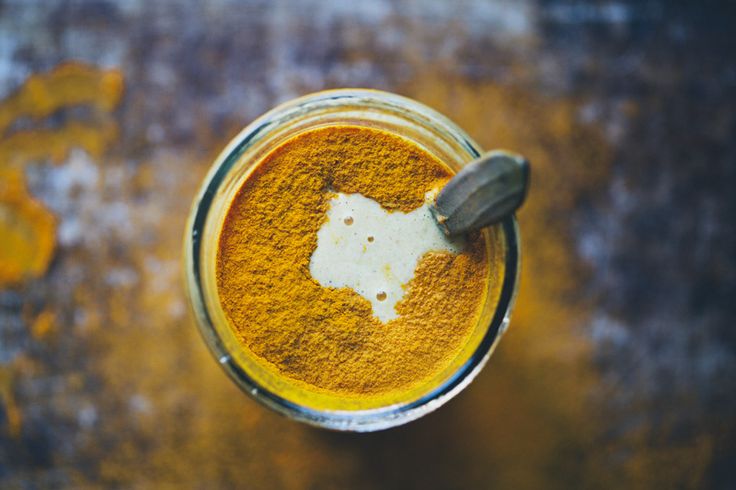
by Tanya Keam | Feb 4, 2015 | Autumn, Chinese medicine, Client information, DIY Wellness Tips, Food, Herbal remedies, Homemade, Immune Support, Immune system, Liver Health, Nourishing, Nutrition, Recipes, Seasonal living, Sunshine coast, Wellness, Winter
Immune Boosting Tumeric Lassi
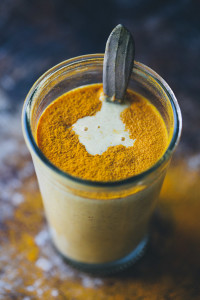
The Benefits of Tumeric
1. Otherwise known as Circuma longa, is a member of the ginger family, Zingaberaceae.
2. A wonderful aspect on the liver. Spring (and late winter) is an important time to consume herbs and foods that strengthen the liver, because spring is the season which rules the liver and gallbladder in Traditional Chinese Medicine. It is said to shrink engorged hepatic ducts, so it can be useful to treat liver conditions such as hepatitis, cirrhosis, and jaundice.
2. Highly valuable for the influence it exerts on the digestive system and the liver. In both Ayurvedic and Traditional Chinese Medicine, it is considered a digestive bitter and a carminative. It can be incorporated into foods, including rice and bean dishes, to improve digestion and reduce gas and bloating. It is a cholagogue, stimulating bile production in the liver and encouraging excretion of bile via the gallbladder. This improves the body’s ability to digest fats.
3. Recommended for chronic digestive weakness and/or congestion. It can be taken as a single extract or in the form of digestive bitters, which combine turmeric with other bitter and carminative herbs. Take either of these twenty minutes before meals, especially meals that are high in protein and/or fat. It is beneficial for people who feel tired after consuming meals or who experience gas and bloating.
4. Anti-inflammatory to the mucous membranes, which coat the throat, lungs, stomach and intestines. Turmeric decreases congestion and inflammation from stagnant mucous membranes. People with the following conditions could benefit from regular use of turmeric: IBS (Irritable Bowel Syndrome), colitis, Crohn’s disease, diarrhea, and post-giardia or post salmonella conditions. It can also reduce the itching and inflammation that accompanies hemorrhoids and anal fissures.
5. Useful to follow up antibiotic treatments, in addition to acidophilus and garlic. It helps to improve the intestinal flora and acts as an anti-bacterial.
6. Turmeric can also benefit skin conditions including: eczema, psoriasis and acne, for it is a potent detoxifier.
7. Turmeric is an antispasmodic to smooth muscles so it reduces digestive and menstrual cramping.
Try adding turmeric to your oatmeal, grains and beans, or take digestive bitters. Whatever way that turmeric is consumed it will benefit both the digestive system and the liver.
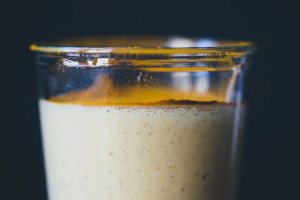
2 large or 4 small glasses
2 cups organic yogurt with active live culture, or dairy or nut milk
2 bananas
2 tsp freshly grated ginger
2 tsp honey, preferably raw (unpasteurized)
1/2 lemon, juice
2 tsp rosehip powder (optional but delicious, and a good C-vitamin boost)
1 tsp vanilla extract or ground vanilla
3-4 tsp ground turmeric (or fresh turmeric root)
Place all ingredients in a blender and mix on high speed until smooth. Add more yogurt if you prefer. Pour the lassi in two large glasses. For a more stunning presentation, dust 1 tsp ground turmeric on top before serving. Add a straw and serve.
Eat well, drink well, take care of you, see you in the clinic,
TK xx
Learn more > http://www.tanyakeamwellness.com
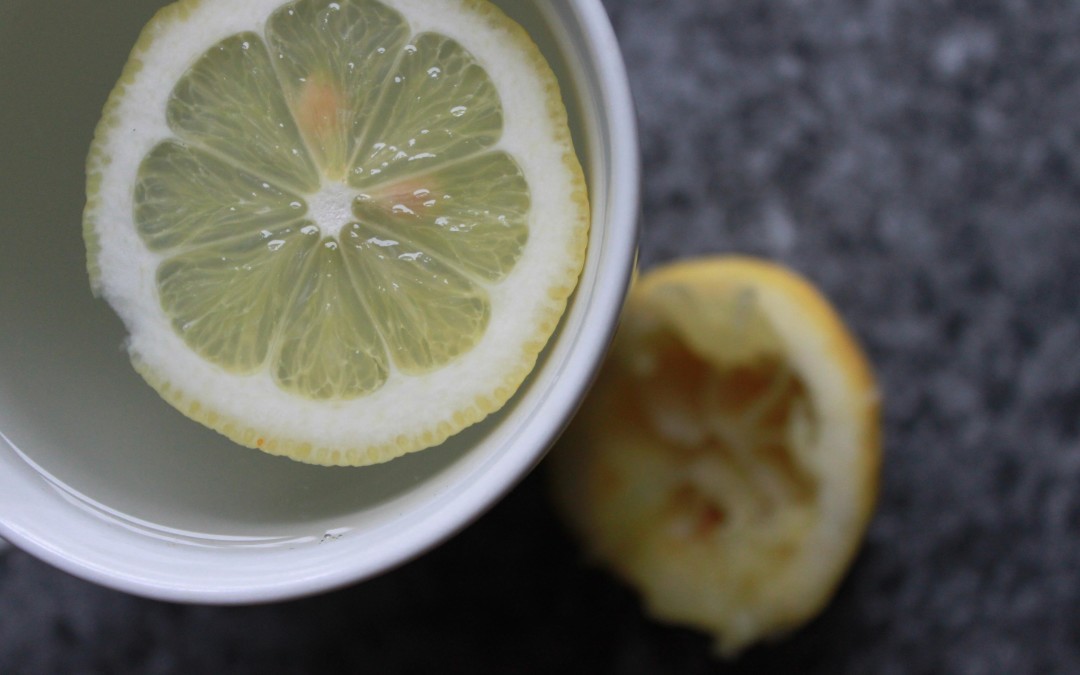
by Tanya Keam | Feb 4, 2015 | Chinese medicine, Client information, Daily Rituals, Dairy free, DIY Wellness Tips, Food, Gut flora, Herbal remedies, Homemade, Liver Health, Nourishing, Nutrition, Recipes, Seasonal living, Sunshine coast, Vegan, Vegetarian, Wellness
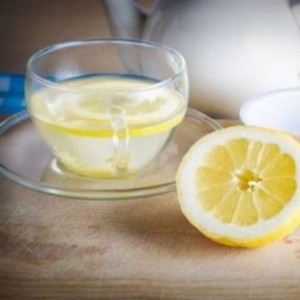
The Five Flavours in TCM
Foods are associated with certain specific properties according to their taste. The five flavours TCM recognizes are: sour, sweet, bitter, pungent and salty. These are also linked to the four natures, being temperatures: cold, cool, warm and hot. TCM uses the flavours of food to coincide with the seasons. For example: In winter we enjoy more warm – hot meals to warm us up, and in Summer we enjoy more cool – cold foods to cool us down.
It is thought that lemons originated in China (along with India, Burma and other parts of southeast Asia) so it’s no surprize that the lemon also forms a part of a healthy diet according to Traditional Chinese Medicine (or TCM).
Hot lemon water first thing in the morning is ideal for the liver to get things moving for the day ahead, both energetically, as well as to hydrate the body after 8 hours of sleep, and to stimulate bile to assist the digestive system in breaking down food.
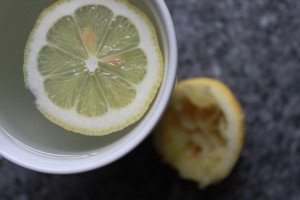
- Lemons are very beneficial for colon health due to the pectin fibres and also serves as a powerful antibacterial
- Lemon is an excellent and rich source of vitamin C, an essential nutrient that protects the body against immune system deficiencies
- It balances maintain the pH levels in the body
- Having warm lemon juice early in the morning helps flush out toxins
- It aids digestion juices and encourages the production of bile
- It is also a great source citric acid, potassium, calcium, phosphorus and magnesium
- It helps prevent the growth and multiplication of pathogenic bacteria that cause infections and diseases
- It helps reducing pain and inflammation in joints and knees as it dissolves uric acid
- It helps shift common cold symptoms
- The potassium content in lemon helps nourish brain and nerve cells
- It strengthens the liver by providing energy to the liver enzymes when they are too dilute
- It helps balance the calcium and oxygen levels in the liver In case of a heart burn, taking a glass of concentrated lemon juice can give relief
- It is of immense benefit to the skin and it prevents the formation of wrinkles and acne
- It helps maintain the health of the eyes and helps fight against eye problems
- Lemon juice helps replenish body salts especially after a strenuous workout session
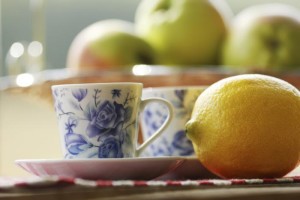
Tips
Juice a whole heap of lemons in one go and freeze the juice into ice cubes so that they are ready to go each morning
Diluting the juice and brushing your teeth after drinking is advised to prevent tooth enamel decay.
Take care of you, see you in the clinic,
TK xx
Learn more > http://www.tanyakeamwellness.com
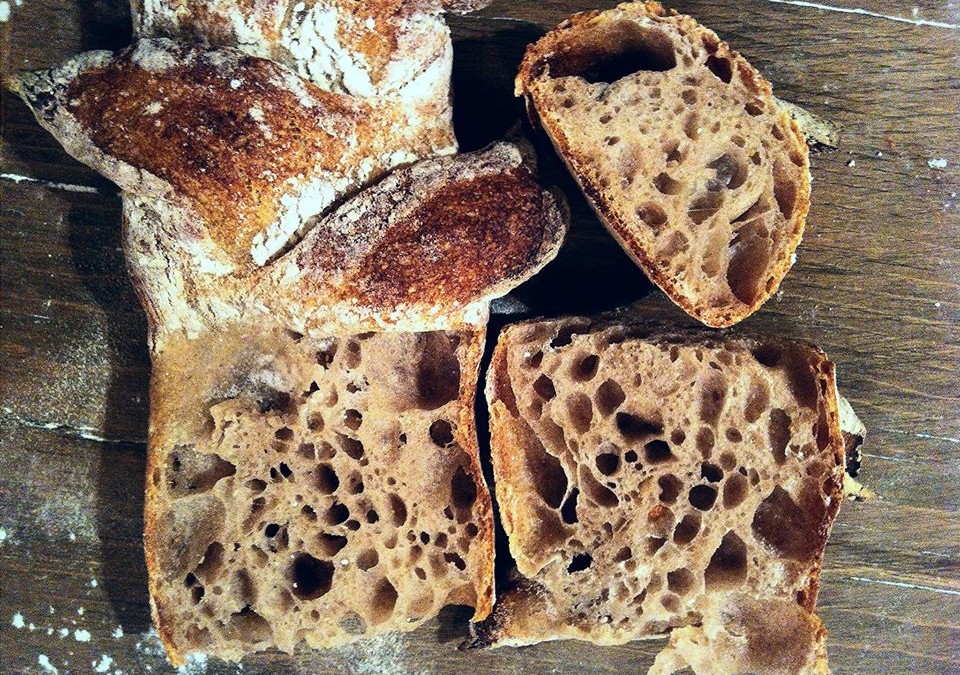
by Tanya Keam | Feb 3, 2015 | Bread, Cultures, DIY Wellness Tips, Fermented, Food, Gut flora, Homemade, Nourishing, Recipes, Sourdough, Sunshine coast, Vegan, Vegetarian, Wellness
Gluten and wheat free diets are becoming increasingly popular by many people these days. However, unless food allergy or sensitivity testing from health partitioners such as Naturopaths, Kinesiologists or General practitioners have been done, I’m not sold on the idea that wheat is the devil completely. The way wheat is processed in Australia though, that’s a whole other story !
In the case of digestive discomfort, pain, bloating, fatigue etc, I suggest to see a healthcare practitioner who can balance your digestive health so that these types of foods are digested well to avoid such symptoms. Acupuncture, Naturopathy and Ayurveda can be of benefit here. Having said that, for some people, wheat is better avoided completely, or only enjoyed 1 -2 times a week. For others, wheat is just too dominant in their diet – it turns out that they are basing all three meals around it. Thus, if this can be reduced, it’s got to be a good thing to use spelt. So here we are.

Spelt flour is a very viable grain to use as it ferments well. It has a lot of natural enzymes and wild yeasts in there, and it holds for a while without turning acid. This is good for the purpose of making bread. Spelt sour dough starters can also be added to other grain sour dough breads. There is gluten is sourdough, however the fermentation process changes glutens form so it is a better option than wheat if you don’t want to be completely gluten free.
So where to start…..
To get the dough to rise, we need to create a fermentation process. Fermentation involves the culture and growth of naturally occurring fungi (yeasts), as well as bacteria and other micro organisms. When fermentation occurs in the dough, carbon dioxide is given off as a natural bi product. Sourdough starter is the thing which begins and feeds the fermentation process in dough, as it is rich in bacteria, enzymes such as amalyse and naturally occurring yeasts. This combination provides a perfect medium for the process called leavening.
There are lots of ways to make bread rise, but they all rely on the same process of fermentation I just mentioned. For example, Baking soda and some sort of acid (cream of tartare, lemon juice or vinegar) will create the necessary chemical reaction to begin fermentation in dough.

The Healthy Cultures
Sourdough starter is also a culture of ‘friendly’ bacteria. This culture helps to create the ideal conditions for the yeasts to multiply, by dealing with some of the bi products of the cell division process. They keep everything clean and moving freely – kind of like cultural street sweepers.
A healthy Sourdough Starter has a relatively stable microbiology; it’s a living thing which, with the right conditions, can be trained to produce consistent and great tasting bread every time. Not only that, but most experts agree that sourdough bread is easier to digest and provides better nutrition than ordinary yeasted breads.
How to avoid Candida Albans
Unfortunately, commercial yeast is designed to be very bland in flavour. It won’t survive lactic acid either, which is present in all sourdough cultures. Cervisea can trigger infections within the body when left to reproduce in the stomach of a human being. The temperature inside us, combined with our intake of sugar and liquids, can prove to be ideal for the growth of candida albicans; a common form of yeast infection leading to many allergic reactions and gradual immune system depletion. When you couple the use of refined yeast with yeast foods such as Bread Improver, the potential for long term ill health is multiplied many times. Sourdough starter can be made quite easily to replace commercial yeast or baking powder to make the dough rise when you want to make home made bread.

Step 1
Sourdough starter has the simplest of recipes:
- one part flour to one part water!
You can try just about any kind of flour (or even cooked grain). The rule of thumb is consistency – it should be a very thick batter to start with, so it just pours.
If it’s runny, it’s too thin, and if it’s a dough, it’s too thick. You can vary the consistency later, when you know what you’re doing. But for now, work within these parameters for best results.
14 day fermentation.

In the early stages
The starter is very fragile – but over time they grow stronger, as local yeasts and bacteria take hold. The most important thing in the early days is not to ‘drown’ the starter with too much food. It’s better to leave it alone to do its thing than to fuss over it all the time.. so wait another day. Lash out if you like – wait two! What the heck! Wait a week. It’ll be better for it!

Some tips before you try the recipe
- In the early stages of fermenting a starter, you’ll get some wastage, as you need to pour off some of the batter as you go, in order to feed it with fresh food. This batter you pour off can be used in your regular yeasted dough or a pancake mix.
- To minimise wastage, start very, very small. We’re talking a tablespoon of flour to start with.
- The warmer the starter gets, the more activity there is, and so the more often you’ll need to feed it.
- The lower the temperature, the slower the fermentation process. If the temperature is too low, fermentation will be overtaken by mould and the starter will become suffocated. However, even at temperatures below 5 degrees celsius but above freezing, fermentation can still be occurring. The mould which grows on the surface will dry out, and can be peeled off and discarded to no ill effect. The remaining batter can be fed and re established quite quickly, and become active and useful again virtually overnight. In fact, the healthy starter underneath the mould is often ready for use straight away. If unsure, feed with just a bit of flour and wait a few hours.
- The flavour of starter is strongly influenced by the amount of times it passes through a certain temperature threshold – sourdough starter becomes more sour each time it returns to a chilled state after being fully thawed. It will also become more sweeter hen fed more frequently, but will take longer to leaven your dough.
-
Equally, the flavour is also influenced by how thick the starter is – if it’s made as a dough or thicker, it will ferment slowly but will make more full flavoured, classic sourdough bread.
A home for your starter
If you have a plastic container with a loose fitting lid, about 2 litres capacity, then you have the perfect vessel for starter to live in. If you only have, say, a small jar with a tight sealing lid, then puncture the lid with a knife so a little air can pass through.

Ultimately, this will become your starter’s abode. It lives in your refrigerator between uses, and will be left out before use to thaw slightly, so as activity is happening. If you are in a warm climate in mid summer, you will need to only bring the starter out of the fridge for an hour or less when you are making bread. If you live in a cold climate, the starter may live out of the fridge all the time. This of course something which you will adapt according to your experience – but I have found that the fridge is the best default storage area, as they run at a consistent temperature and are reasonably immune from airborne contaminants.

Happy fermenting!
Take care of you, see you in the clinic,
TK xx
Learn more > http://www.tanyakeamwellness.com
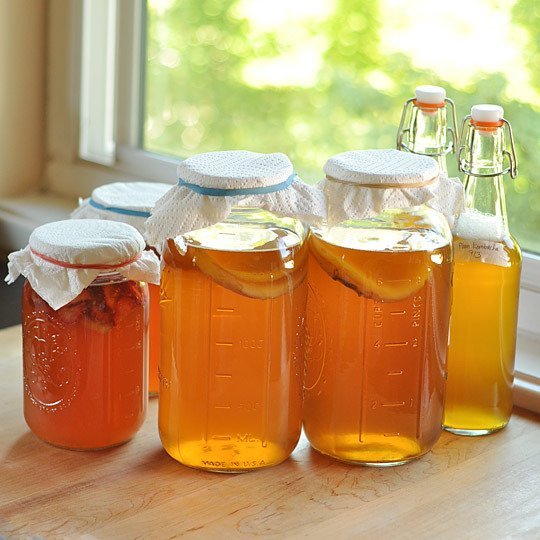
by Tanya Keam | Jan 19, 2015 | Client information, Cultures, DIY Wellness Tips, Fermented, Food, Gut flora, Kombucha, Nourishing, Nutrition, Probiotic drink, Recipes, Sunshine coast, Vegan, Vegetarian, Wellness
What Is Kombucha Tea?
The first recorded use of Kombucha was in 221 B.C. during the Chinese empire of the Tsin-Dynasty. They called it “The remedy for immortality” or the “divine tische”. It is a living health drink which has been used for thousands of years to help stimulate the metabolism and maintain a healthy immune system.
Kombucha starts out as a sugary tea, which is then fermented with the help of a scoby. “SCOBY” is actually an acronym for “symbiotic culture of bacteria and yeast.”
The scoby bacteria and yeast eat the majority of the sugar in the tea, transforming the tea into a refreshingly fizzy, slightly sour fermented (but mostly non-alcoholic) beverage that is relatively low in calories. Flavours can be added to the Kombucha such as ginger, pear or blackberries.
The SCOBY
Let’s talk about that scoby. It’s weird, right?! It floats, it’s rubbery and slightly spongy, brown stringy bits hang from it, and it transforms sugary tea into something fizzy and sour. It’s totally weird. But if you take a step back, it’s also pretty awesome.
There are a lot of theories about why the bacteria and yeast form this jelly-like layer of cellulose at the top of the kombucha. The most plausible that I’ve found is that it protects the fermenting tea from the air and helps maintain a very specific environment inside the jar that is shielded from outsiders, aka unfriendly bacteria.
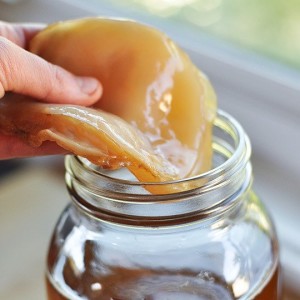
Probiotics?
Which brings us to the next question: what’s actually in kombucha? Kombucha is indisputably full of probiotics and other happy things that our intestines love and that help boost our overall health.
How to Make Kombucha Tea at Home
Makes about 4 litres
What You Need
Ingredients
4.5 cups of filtered water
1 cup white sugar or raw brown sugar – The less processing the better
8 bags black tea (or 2 tablespoons loose tea) – I prefer English Breakfast tea
2 cups starter tea from last batch of kombucha or store-bought (unpasteurized, neutral-flavoured) kombucha
1 scoby per fermentation jar
Optional flavouring extras for bottling: 1 to 2 cups chopped fruit, ginger, turmeric, lime, 2 to 3 cups fruit juice, 1 to 2 tablespoons flavoured tea (like hibiscus or Earl Grey), 1/4 cup honey, 2 to 4 tablespoons fresh herbs or spices
Equipment
Stock pot
A jar big enough to hold 4 cups of water with room spare
Bottles: Six 16-oz glass bottles with plastic lids, 6 swing-top bottles, or clean soda bottles
Small funnel
Instructions
Note: Avoid prolonged contact between the kombucha and metal both during and after brewing. This can affect the flavour of your kombucha and weaken the scoby over time.
1. Make the Tea Base: Bring the water to a boil. Remove from heat and stir in the sugar to dissolve. Drop in the tea and allow it to steep until the water has cooled. Depending on the size of your pot, this will take a few hours. You can speed up the cooling process by placing the pot in an ice bath.
2. Add the Starter Tea: Once the tea is cool, remove the tea bags or strain out the loose tea. Stir in the starter tea. (The starter tea makes the liquid acidic, which prevents unfriendly bacteria from taking up residence in the first few days of fermentation.)
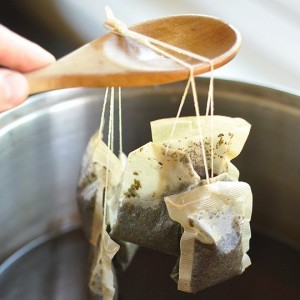
3. Transfer to Jars and Add the Scoby: Pour the mixture into your glass jar and gently slide the scoby or fermented little bits that will be floating in the bottom of a store bought kombucha, into the jar with clean hands. Cover the mouth of the jar with a few layers of cheesecloth or paper towels secured with a rubber band.
4. Ferment for 7 to 10 Days: Keep the jar at room temperature, out of direct sunlight, and where it won’t get touched or moved around. Ferment for 7 to 10 days, checking the kombucha and the scoby periodically.
It’s not unusual for the scoby to float at the top, bottom, or even sideways. A new cream-colored layer of scoby should start forming on the surface of the kombucha within a few days. It usually attaches to the old scoby, but it’s ok if they separate. You may also see brown stringy bits floating beneath the scoby, sediment collecting at the bottom, and bubbles collecting around the scoby. This is all normal and signs of healthy fermentation.
After seven days, begin tasting the kombucha daily by pouring a little out of the jar and into a cup. When it reaches a balance of sweetness and tartness that is pleasant to you, the kombucha is ready to bottle.
5. Remove the Scoby: Before proceeding, prepare and cool another pot of strong tea for your next batch of kombucha, as outlined above. With clean hands, gently lift the scoby out of the kombucha and set it on a clean plate. As you do, check it over and remove the bottom layer if the scoby is getting very thick.
6. Bottle the Finished Kombucha: Measure out your starter tea from this batch of kombucha and set it aside for the next batch. Pour the fermented kombucha (straining, if desired) into bottles using the small funnel, along with any juice, herbs, or fruit you may want to use as flavouring. Leave about a half inch of head room in each bottle. (Alternatively, infuse the kombucha with flavourings for a day or two in another jar covered with cheesecloth, strain, and then bottle. This makes a cleaner kombucha without “stuff” in it.)
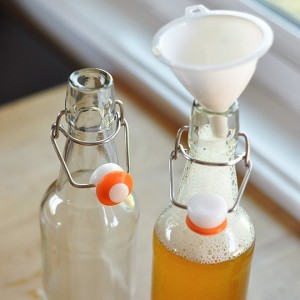
7. Carbonate and Refrigerate the Finished Kombucha: Store the bottled kombucha at room-temperature out of direct sunlight and allow 1 to 3 days for the kombucha to carbonate (the added fruit you added allows for a second fermentation process which is where it becomes carbonated). Until you get a feel for how quickly your kombucha carbonates, it’s helpful to keep it in plastic bottles; the kombucha is carbonated when the bottles feel rock solid. Refrigerate to stop fermentation and carbonation, and then consume your kombucha within a month. It is a good idea to open the bottle to let some gas/air bubbles out otherwise it will explode like a Champaign bottle!
8. Make a Fresh Batch of Kombucha: Clean the jar being used for kombucha fermentation. Combine the starter tea from your last batch of kombucha with the fresh batch of sugary tea, and pour it into the fermentation jar. Slide the scoby on top, cover, and ferment for 7 to 10 days.
Additional Notes:
• Batch Size: To increase or decrease the amount of kombucha you make, maintain the basic ratio of 1 cup of sugar, 8 bags of tea, and 2 cups starter tea per 4 cups water batch. One scoby will ferment any size batch, though larger batches may take longer.
• Putting Kombucha on Pause: If you’ll be away for 3 weeks or less, just make a fresh batch and leave it on your counter. It will likely be too vinegary to drink by the time you get back, but the scoby will be fine. For longer breaks, store the scoby in a fresh batch of the tea base with starter tea in the fridge. Change out the tea for a fresh batch every 4 to 6 weeks.
• Other Tea Options: Black tea tends to be the easiest and most reliable for the scoby to ferment into kombucha, but once your scoby is going strong, you can try branching out into other kinds. Green tea, white tea, oolong tea, or a even mix of these make especially good kombucha. Herbal teas are ok, but be sure to use at least a few bags of black tea in the mix to make sure the scoby is getting all the nutrients it needs. Avoid any teas that contain oils, like earl grey or flavored teas.
• Avoid Prolonged Contact with Metal: Using metal utensils is generally fine, but avoid fermenting or bottling the kombucha in anything that brings them into contact with metal. Metals, especially reactive metals like aluminum, can give the kombucha a metallic flavor and weaken the scoby over time.
Troubleshooting Kombucha
• It is normal for the scoby to float on the top, bottom, or sideways in the jar. It is also normal for brown strings to form below the scoby or to collect on the bottom. If your scoby develops a hole, bumps, dried patches, darker brown patches, or clear jelly-like patches, it is still fine to use. Usually these are all indicative of changes in the environment of your kitchen and not a problem with the scoby itself.
• Kombucha will start off with a neutral aroma and then smell progressively more vinegary as brewing progresses. If it starts to smell cheesy, rotten, or otherwise unpleasant, this is a sign that something has gone wrong. If you see no signs of mold on the scoby, discard the liquid and begin again with fresh tea. If you do see signs of mold, discard both the scoby and the liquid and begin again with new ingredients.
• A scoby will last a very long time, but it’s not indestructible. If the scoby becomes black, that is a sign that it has passed its lifespan. If it develops green or black mold, it is has become infected. In both of these cases, throw away the scoby and begin again.
• To prolong the life and maintain the health of your scoby, stick to the ratio of sugar, tea, starter tea, and water outlined in the recipe. You should also peel off the bottom (oldest) layer every few batches. This can be discarded, composted, used to start a new batch of kombucha, or given to a friend to start their own.
• If you’re ever in doubt about whether there is a problem with your scoby, just continue brewing batches but discard the kombucha they make. If there’s a problem, it will get worse over time and become very apparent. If it’s just a natural aspect of the scoby, then it will stay consistent from batch to batch and the kombucha is fine for drinking.
Brewing Kombucha Safely
And while the homebrewed nature of kombucha makes some home cooks nervous, is unlikely that kombucha will ever make you sick. Like all things, you need to use common sense when brewing it and pay attention to what you’re doing. It’s natural to feel nervous and unsure at first. Bottom line: if the scoby is healthy, then the kombucha will be healthy.
Is There Alcohol in Kombucha?
Kombucha does contain a little bit of alcohol as a by-product of the fermentation process. It is usually no more than 1%. Unless you drink a lot of it back to back, you won’t get drunk. But people with alcohol sensitivities should be aware of its presence.
I’m breaking the kombucha-making process into very small steps here. It looks long and complicated, but this is actually a very straightforward and streamlined process. Once you get into the rhythm of it, bottling a finished batch of kombucha and preparing the next only takes about 20 minutes every 7 to 10 days.
Where to Find Kombucha Brewing Supplies
You can use regular, store-bought tea and sugar for brewing kombucha. You can pick up a scoby from a kombucha-brewing friend or even make your own. They are available online also, however give starting your own from scratch a go!
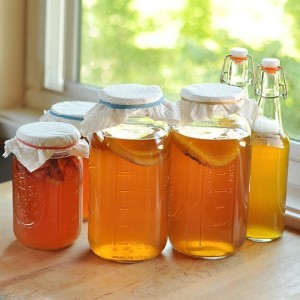
Have fun ! Take care of you, see you in the clinic,
TK xx
Learn more > http://www.tanyakeamwellness.com

 Hi, I’m Tanya, an AHPRA registered Acupuncturist, bodyworker and doctor of Chinese medicine in Nambour in the Sunshine Coast hinterland, Queensland Australia. I practice Chinese and natural medicine because its safe, logical, relevant and has effectively shown methods of natural wellness for thousands of years (read more about my training here). Life doesn’t need to be complicated and nor does the treatment approaches to get people feeling vibrant and well. I’ve seen people gain a lot from treatments, much more than just alleviating symptoms. It’s exciting to connect with people and share deep wisdom from the classics of ancient and traditional medicine, with modern protocols for todays mind-body living. See you in the clinic !
Hi, I’m Tanya, an AHPRA registered Acupuncturist, bodyworker and doctor of Chinese medicine in Nambour in the Sunshine Coast hinterland, Queensland Australia. I practice Chinese and natural medicine because its safe, logical, relevant and has effectively shown methods of natural wellness for thousands of years (read more about my training here). Life doesn’t need to be complicated and nor does the treatment approaches to get people feeling vibrant and well. I’ve seen people gain a lot from treatments, much more than just alleviating symptoms. It’s exciting to connect with people and share deep wisdom from the classics of ancient and traditional medicine, with modern protocols for todays mind-body living. See you in the clinic ! 































